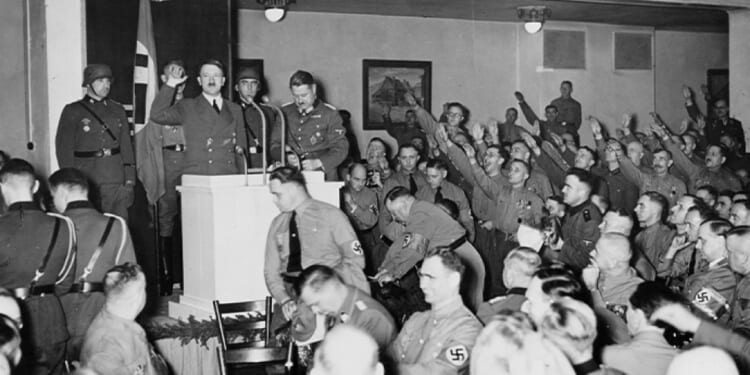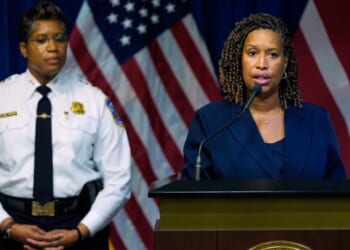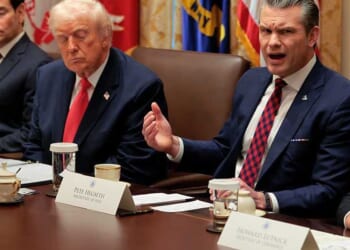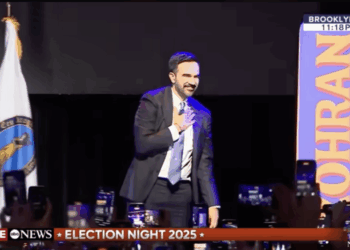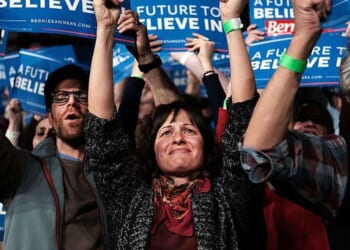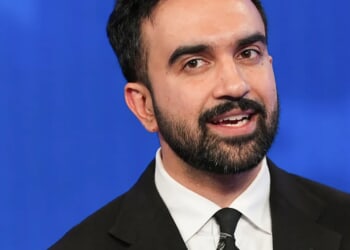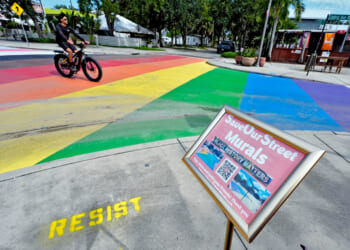When we think of those who stood up, spoke out, and took covert action against the Nazis, it is the French resistance, Greek partisans, and other clandestine networks in occupied Europe that usually come to mind. Yet, some brave German souls also sought to undermine or even overthrow the Nazi regime. Most of them were ordinary people. Sophie Scholl and her fellow members of the White Rose movement were students; Otto and Elise Hampel, who distributed postcards calling for revolt, were a poorly educated working-class couple; and Georg Elser, who tried to kill Adolf Hitler with explosives, was a carpenter.
The other man who came close to assassinating the Führer with a bomb, Claus von Stauffenberg, was no average person but rather a Bavarian-born aristocrat and Wehrmacht colonel. Much has been written about him, his military coconspirators, and their failed coup. Less well known is a story about another select group of high-ranking and well-connected Germans who defied Hitler — a group consisting of two countesses, a diplomat, a headmistress, a senior government official, and an ambassador’s widow. Jonathan Freedland’s The Traitors Circle brings these criminally forgotten figures out of the shadows and shows how, through their moral outlooks and rebellious deeds, they “found themselves engulfed in a drama that would exact a heavy cost and whose impact would be felt at the very top of the Nazi state.”
At the center of the book is, of all things, a tea party. On Sept. 10, 1943, Elisabeth von Thadden hosted an afternoon gathering in her Berlin apartment. Ostensibly, the occasion was to celebrate a birthday. In reality, it was an opportunity for an assortment of anti-Nazi friends to meet in secret and in safety and share their concerns about the state of their nation. There was talk about the war now being a lost cause for Germany and harsh criticism of the military leadership. The discussion then turned to what should be done once peace was restored and a democratic government was established. One guest, society hostess Hanna Solf, made clear what should befall Hitler: “When we get him, we’ll put him against a wall.”
However, unbeknownst to the guests, an informer had infiltrated the party and was mentally recording every incriminating comment, from disloyal doom-laden remarks about the disastrous course of the war to perfidious views on the downfall of the Third Reich. Once he had reported back to his Gestapo handler, their luck ran out. It brought to a swift end arduous yet rewarding years of opposition and activism, and eventually exposed them to, as Freedland puts it, “the hangman’s rope and the guillotine’s blade.”
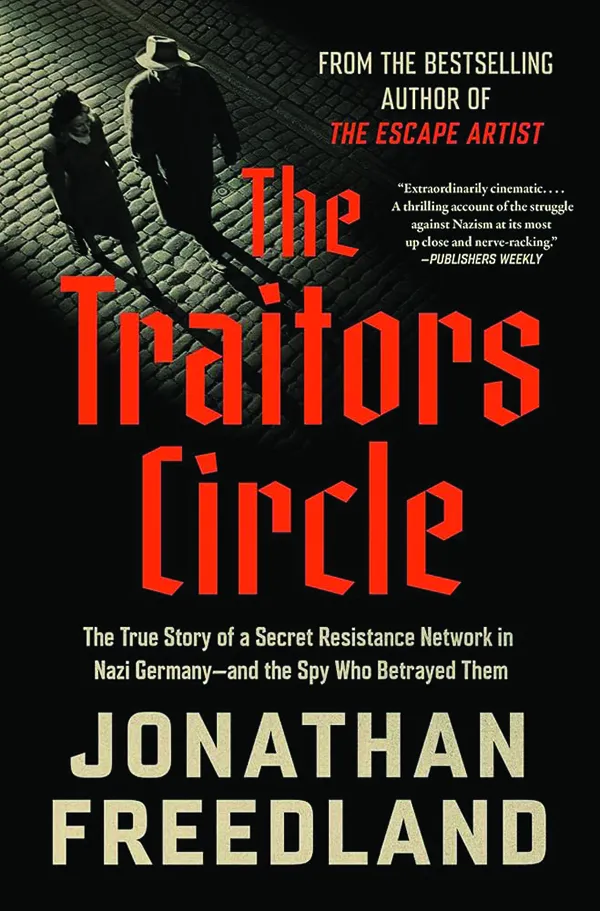
The book’s narrative primarily takes the form of before the tea party and after it. Freedland’s lead-up to it comprises a series of vivid portraits of his main characters grappling with life in Germany as Hitler tightens his stranglehold on power. We meet Otto Kiep, who, as Germany’s consul general in America, makes a speech at a gala night in New York City honoring eminent physicist — and prominent Jew — Albert Einstein, much to the chagrin of his superiors at home. Arthur Zarden rises through the ranks to become the most senior official in the German Treasury, but is told to apply for retirement when it becomes known that his wife is Jewish.
Tea party hostess Elisabeth von Thadden welcomes the Nazis in 1933. But after being angered by the violence and vandalism of Kristallnacht, the forced closure of her elite school for girls, and the Führer’s view of the church (“One is either a Christian or a German, one cannot be both”), she becomes a staunch opponent of national socialism. Hanna Solf, the widow of the former German ambassador to Tokyo, hosts salons where resistance luminaries rub shoulders and trade reports. Together with her daughter, Lagi, she devises perilous schemes to smuggle “submarines,” or Jews in hiding, out of Nazi Germany.
Freedland intersperses these characters’ stories with those of his villains. We follow Herbert Lange’s trajectory from failed law student to terrifyingly successful commandant of the first death camp. Along the way, he displays a talent for killing without compunction, graduating from executing Polish civilians in forests to murdering the disabled and mentally ill in gas vans to overseeing the liquidation of Jewish ghettos (after a “test run” which involved the deaths of some 6,000 Jews). In time, Lange is tasked with rooting out and eliminating the enemy within. When he learns of the “Solf Circle,” he recruits an agent, a young doctor named Paul Reckzeh, to win the trust of the group of traitors by convincing them he is a comrade and ally. Reckzeh’s duplicity sows panic and seals fates.
This section of the book proves riveting. Freedland expertly recounts how members of the party came to smell a rat and suspect Reckzeh was a spy, and how they made frantic attempts to warn one another. Kiep’s words to his friends offered little comfort: “The conversations we had were absolutely lethal.” We remain rapt as they feel the full force of Nazi vengeance: show trials presided over by crazed judge Roland Freisler; incarceration in prisons and concentration camps; sleep deprivation, hunger, and solitary confinement, not to mention long and brutal rounds of questioning and the euphemistically termed “aggravated interrogation”; and, finally, the ultimate punishment for treachery.
These aren’t the only moments where the narrative exerts a tight grip. The whole of Freedland’s study reads like a fast-paced thriller. There is well-calibrated tension at routine intervals, such as when Kiep is recalled from America for “consultations” with Hitler or when Von Thadden tries to reclaim some compromising letters. One woman, Countess Maria von Maltzan, enthralls with her high-risk exploits, whether spiriting Jewish fugitives to safety through Nazi patrolled waters and Berlin sewers or confronting marauding Red Army soldiers.
It is a testament to Freedland’s skill as a writer that he can keep his reader hooked not by counting down to a bomb blast but by building up to a tea party. One way he creates suspense is with cliffhanger endings to chapters. A lot of these have the desired effect and keep us eagerly turning the pages, but some are too melodramatic. “To overcome the unease he had encountered, he would have to take a different approach, one that was more…personal,” concludes one chapter. “But Freisler wore a robe of scarlet red: the color of blood,” ends another. Freedland should have had more faith in his source material and resisted the urge to spice it up.
These flourishes aside, The Traitors Circle is an elegantly written account of courage, solidarity, and betrayal. Some of the pages show mankind at its worst, but at the heart of the story are what Freedland calls “acts of radical, unnecessary, mortally dangerous good.” What qualifies as a moral stance, and how far should we go to challenge tyranny? Freedland tells a stirring tale while exploring weighty questions.
Malcolm Forbes has written for the Economist, the Wall Street Journal, and the Washington Post. He lives in Edinburgh.

